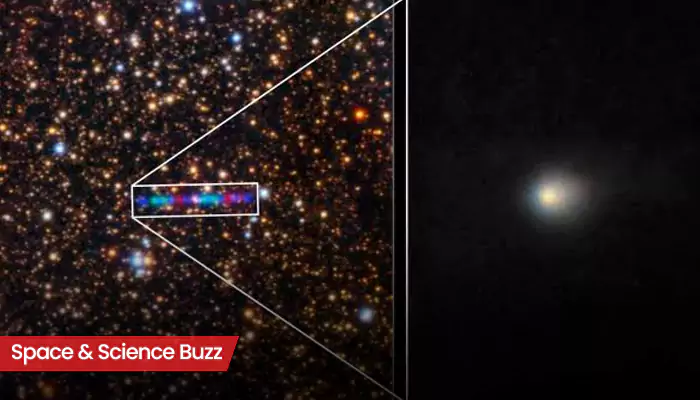
Here are today’s most important updates from the realm of Science and Space.
Hubble Clicks a Cosmic Gatecrasher: Interstellar Comet Makes Grand Entrance
NASA’s Hubble Space Telescope has captured the first detailed images of interstellar comet 3I/ATLAS as it passes through our solar system, offering scientists a rare glimpse at a visitor from another star system. The photos reveal a bright and well-developed coma, the cloud of gas and dust surrounding the comet's nucleus, with striking clarity. Designated “3I” to signify the third known interstellar object detected in our solar system, Comet ATLAS is now being watched closely as it completes its journey across the Sun's neighbourhood. The new Hubble images show the comet with a distinct puffiness around its nucleus, indicating significant outgassing activity as it responds to the Sun’s heat. Researchers hope that ongoing observations will shed light on the composition, structure, and behavior of interstellar objects and perhaps reveal clues about planetary systems beyond our own.
Remote Repair Level: NASA Fixes Space Camera Half a Billion km Away

In a remarkable feat of remote engineering, NASA successfully revived a damaged camera aboard its Juno spacecraft as it orbited Jupiter, approximately 595 million kilometers from Earth. The recovery, accomplished through an innovative “annealing” technique, highlights new strategies for protecting spacecraft instruments exposed to intense radiation environments. JunoCam, a visible-light colour camera designed for capturing striking images of Jupiter and its moons, has defied expectations by operating well beyond its intended lifespan. The camera’s optical unit sits outside a titanium radiation vault, making it vulnerable to Jupiter’s extremely harsh radiation belts, the most intense planetary radiation fields in the solar system. Initially expected to last only eight orbits, JunoCam functioned normally through the spacecraft’s first 34 orbits.
From Silent to Strong: Surgeons Restart ‘Dead’ Heart to Save Infant’s Life

In a groundbreaking medical achievement, surgeons at Duke University have successfully resuscitated a "dead" heart on the operating table and transplanted it into a three-month-old baby, saving the child's life. The innovative technique, known as "on-table reanimation," involves using a custom-designed machine to revive the donor heart outside the donor's body. The transplant was a success, with the infant showing normal cardiac function and no signs of organ rejection six months later. This breakthrough could potentially offer new hope for infants in need of heart transplants. “It's something that has never been done in the field of heart transplantation with success,” one doctor researcher mentioned recently.
Spiders Have Ancient Roots—And This Fossil Just Uncovered Them

A new study of Mollisonia symmetrica, a 500-million-year-old marine fossil, reveals that arachnids, spiders and their relatives, evolved in the ocean rather than exclusively on land as previously believed. Spiders and scorpions have ruled as terrestrial predators for 400 million years, with their success often attributed to adaptations for life on land. Until now, the fossil record suggested that arachnids originated and diversified only after their ancestors conquered terrestrial environments. This new perspective suggests arachnids evolved many of their key traits underwater before some later lineages ventured onto land, possibly preying on ancestral insects and millipedes and driving evolutionary innovations like insect flight for escape.